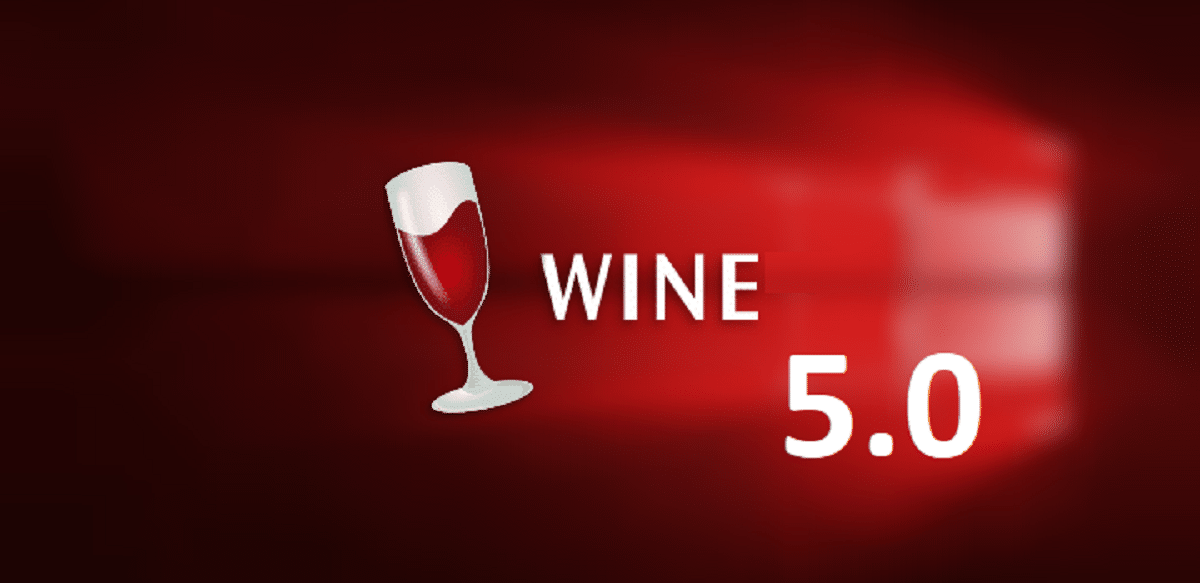
The guys at Wine are happy to announce the release of the new stable branch of Wine 5.0 which comes after a year of development, 28 experimental versions and 6 Release Candidates of which it was originally contemplated that at the beginning of the year it would be the final version and it was not.
After all this a stable version of the open implementation of Win32 API Wine 5.0 is presented, which incorporated more than 7400 changes. In which Wine confirms the complete work of 4869 programs for Windows and of which for another 4136 they work fine with additional settings and external DLLs.
Among the key achievements of the new version are the delivery of built-in Wine modules in PE format, support for multiple monitor setups, a new implementation of the XAudio2 sound API, and support for the Vulkan 1.1 graphics API.
major developments
With the release of this stable version it is highlighted that with the MinGW compiler, most Wine modules are now compiled into PE executable format instead of ELF. Using PE solves problems with the support of various copy protection schemes that verify the identity of system modules on disk and in memory;
PE executable files now they are copied to the directory ~ / .wine ($ WINEPREFIX) instead of using bogus DLL files, making the population more similar to actual Windows installations, at the cost of additional disk space;
El Wine C runtime adds support for link to files binaries compiled in MinGW, which is used by default when creating a DLL instead of the MinGW runtime.
As for the improvements for the graphics, we can find that added support for working with multiple monitors and graphics adapterss, including the ability to dynamically change settings. In addition to the driver for The Vulkan graphical API was updated to Vulkan 1.1.126.
Direct3D 12 Deployment Capabilities ExpandFor example, support has been added for switching between full screen and windowed modes, switching screen modes, generating scaled output, and controlling the interval to replace drawing buffers.
The WindowsCodecs library implements the ability to convert additional raster formats, including formats with an indexed palette.
Furthermore, DXGI adds support for informing the application about minimizing its window, which enables the application to reduce the execution of resource-intensive operations by minimizing the window. For applications using DXGI, it is possible to switch between full screen and window modes using the Alt + Enter combination.
I also knowe highlights that the handling of different boundary conditions is improved, as the application beyond the admissible ranges of the reference values for the transparency and depth test.
Another new feature is the ability to mix 32-bit and 64-bit DLL files andn the directories used for the download. Libraries that do not match the current bit depth (32/64) are ignored, if a library can be found that is correct for the current bit depth.
How to install Wine 5.0?
This new stable version of Wine 5.0, has not yet been included in the repositories of the main Linux distributions so for now to use the new version is downloading and compiling the source code.
But it is only a matter of hours before Wine 5.0 is within the software channels of your distro. For those who like to wait, you can install as soon as it is available, following the instructions we share.
Si are users of Ubuntu, Linux Mint and derivatives if use a 64-bit version of the system, we are going to enable the 32-bit architecture with:
sudo dpkg --add-architecture i386
Now to install Wine on any architecture we are going to add the following to the system:
wget https://dl.winehq.org/wine-builds/Release.key sudo apt-key add Release.key
We add the repository, for Ubuntu 19.10 and derivatives:
sudo apt-add-repository 'deb https://dl.winehq.org/wine-builds/ubuntu/ eoan main'
For Ubuntu 18.04 and derivatives:
sudo apt-add-repository 'deb https://dl.winehq.org/wine-builds/ubuntu/ bionic main'
Ubuntu 16.04 and derivatives:
sudo apt-add-repository 'deb https://dl.winehq.org/wine-builds/ubuntu/ xenial main'
Then we update the repositories with:
sudo apt-get update
Done this, We proceed to install the essential packages for Wine to run smoothly on the system:
sudo apt install --install-recommends winehq-stable sudo apt-get --download-only dist-upgrade
While for those who are users of Debian and systems based on it, should do the following.
They must first enable 32-bit architecture on the system
sudo dpkg --add-architecture i386
We proceed to download the Wine public key:
wget -nc https://dl.winehq.org/wine-builds/Release.key
We add it to the system
sudo apt-key add Release.key
Now We must edit the sources.list and add the Wine repository to the system, we do this with:
sudo nano /etc/apt/sources.list</pre><pre>deb https://dl.winehq.org/wine-builds/debian/stretch main
We update the list of packages with:
sudo apt-get update
Y finally we install with:
sudo apt-get install --install-recommends winehq-stable
For In the case of Fedora and its derivatives, we must add the appropriate repository to the version we are using.
Fedora 31:
sudo dnf config-manager --add-repo https://dl.winehq.org/wine-builds/fedora/31/winehq.repo
And finally we install Wine with:
sudo dnf install winehq-stable
In the case of Arch Linux or any Arch Linux based distribution We can install this new version from its official distribution repositories.
The command to install it is:
sudo pacman -sy wine
Si are openSUSE users can install Wine with:
sudo zypper install wine
sorry for being "that guy" but someone already trying to run this new version with office2013 / 2019 or photoshop?
With the office you have no problem, I have tried it (for school and office tasks) and it works well. Photoshop stopped using it many years ago and instead used Krita or GIMP (depending on what needs to be done).